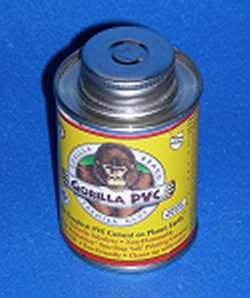
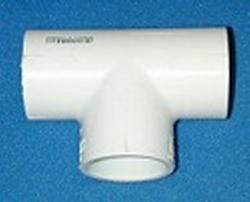
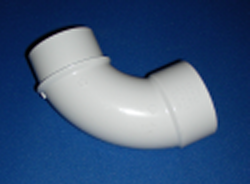
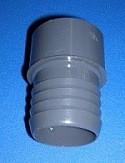
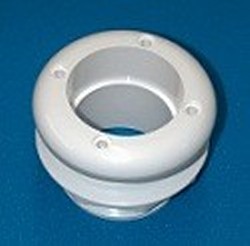
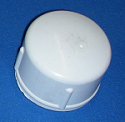
The amount of airflow into the top of the standpipe controls the height of the water in that chamber.
These notes are more for my own reference, but since I find them useful, I figure someone else might too.
I wanted to calculate the flow rate through the DIY overflow I'm planning to build. Some time on the Wikipedia Sipon page and remembering how to do algebra resulted in some pretty impressive numbers. I'm recording the math here so I don't have to hurt my brain again.
I sized the overflow to fill the hole in the hood that I picked up used. This is a rather backwards way of doing things, but I know it's more then big enough, and I want to have something to fill the hole so it'll work. But now I need to know the flow rate through the overflow. From the wikipedia page, I used the equation for the velocity of a siphon. And from measuring in SketchUp, I know my maximum height difference is 2 inches (0.0508 meters).
Also from measuring in SketchUp, I know the area of the siphon is 5.625 square inches (0.003629025 square meters).velocity = sqrt(2 * g * height) velocity = sqrt(2* 9.807 * 0.0508) velocity = 0.9982 m/s
Or, in more commonly used units, 3504 gallons per hour.flow = velocity * area flow = 0.9982 * 0.003629 flow = 0.003685 cu m/s
Now, the next step is balancing the flow through the standpipe with the siphon. So, I need to combine the above two equations and solve for area. I measured the height of the drop in the standpipe to be 27.25 inches (0.69215 meters).
Which is 1.550 square inches. Since I'll be using round tubing, dividing by π and taking the square root gives me a radius of 0.7024 inches, or a diameter of 1.405 inches. So, throwing in a little safty margin says 2 inch inner diameter pipe will be just fine. The bulkhead fitting I've got speced below uses a hole from 2-7/8" to 3-1/2". Or, two 1 inch inner diamter pipes would do it, but that's cutting it darn close.flow = area * sqrt(2 * g * height) 0.003685 = area * sqrt(2 * 9.807 * 0.69215) area = 0.001000 sq m
Since this is going on a 55 gallon tank, 500 gallons per hour of circulation should be enough, and I'll be able to move this overflow on to larger aquariums if I ever upgrade.
Since it seems to be the best way to go, I'll build a 2" Durso Standpipe. Components I'll need, and the prices from FlexPVC:
| Fitting | Price | Picture | Notes |
|---|---|---|---|
| 1/4 pint (4oz) PVC Glue | $3.95 |  | |
| 401-020 2 inch T Sch 40 | $1.44 |  | |
| 2 inch Sweep Street 90 Elbow | $4.44 |  | Street is important. It means it plugs directly into the T |
| 2 inch barb by 2 inch spigot | $3.25 |  | This goes on the bottom of the bulkhead to attach a hose that drains into the sump |
| Bulkhead 2 inch slip | $5.99 |  | |
| 2inch cap sch 40 | $0.60 |  | This gets a hole drilled in it, and a standard airline flow control valve glued into it. The amount of airflow into the top of the standpipe controls the height of the water in that chamber. |
Or, based on this thread, I could just say "screw it" and drill the tank. In that case I would use a calfo overflow, 4" out from the back, 6" long (to accomidate two bulkheads). Or maybe just a 4"x6" box in one corner? Grab two of these clear bulkheads (mounting one about an inch higher then the other one, only the low one gets an elbow). Then use pipe and fittings from ClearPVCPipe.com to get down to the sump. The bulkhead with the elbow gets a Durso'ed, the other doesn't. Keeping the Durso standpipe slightly off vertical is also rumored to help with the sound. Maybe just take the pipe to below the stand then go with tubing? And how do I keep from needing the silly looking green air regulator valve on the top of the cap?
And then there's the issue of return. But that's for later.